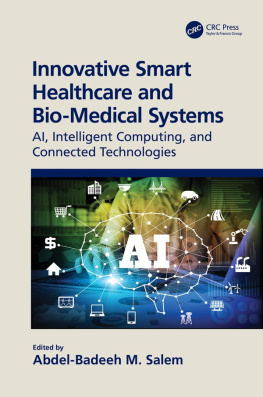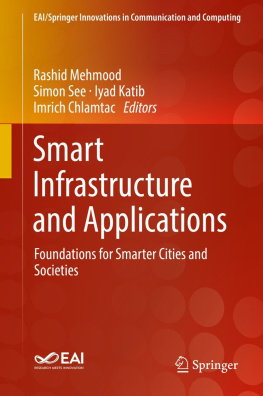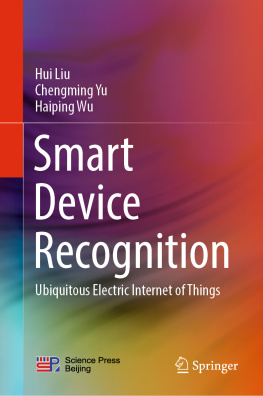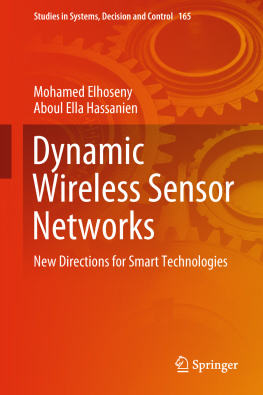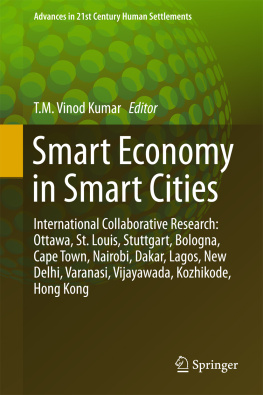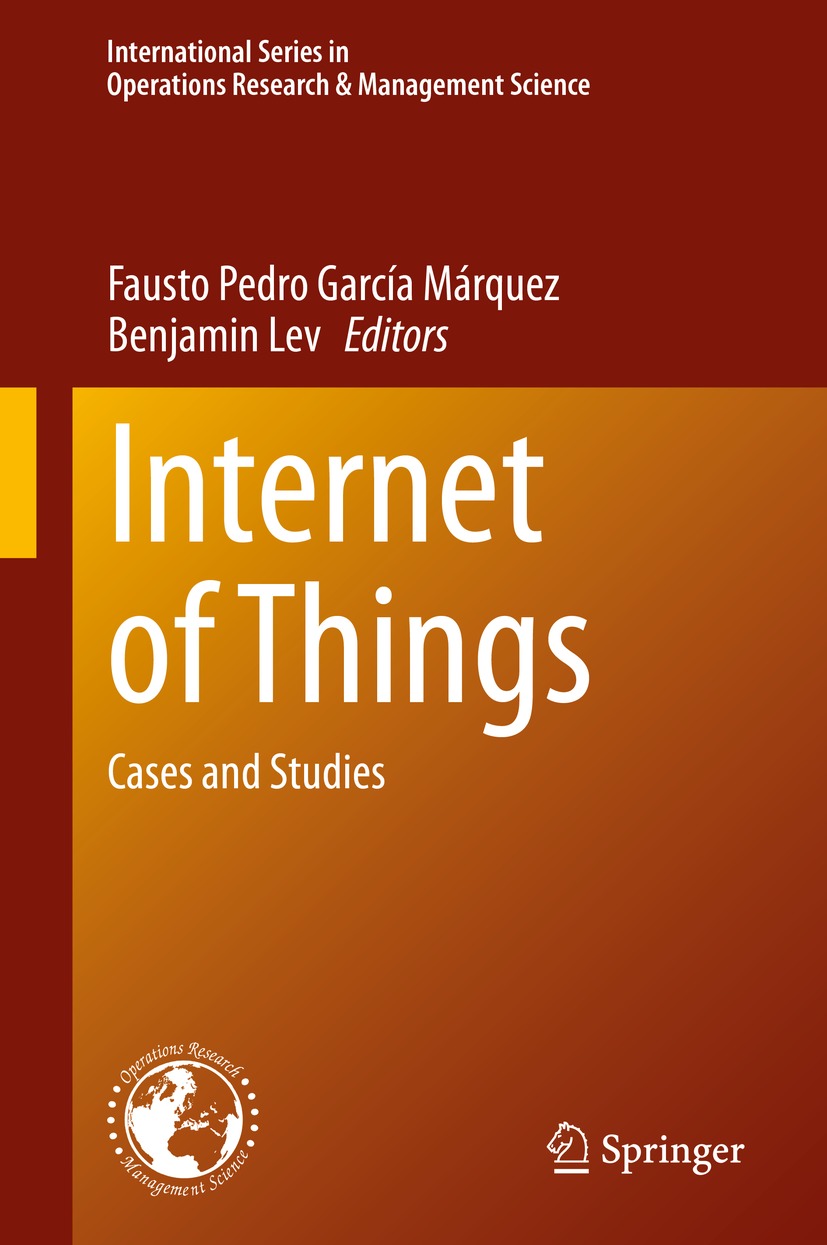Volume 305
International Series in Operations Research & Management Science
Series Editor
Camille C. Price
Department of Computer Science, Stephen F. Austin State University, Nacogdoches, TX, USA
Associate Editor
Joe Zhu
Foisie Business School, Worcester Polytechnic Institute, Worcester, MA, USA
Founding Editor
Frederick S. Hillier
Stanford University, Stanford, CA, USA
More information about this series at http://www.springer.com/series/6161
Editors
Fausto Pedro Garca Mrquez and Benjamin Lev
Internet of Things
Cases and Studies
1st ed. 2021

Logo of the publisher
Editors
Fausto Pedro Garca Mrquez
Ingenium Research Group, ETSI Industriales de Ciudad Real, University of Castilla-La Mancha, Ciudad Real, Spain
Benjamin Lev
LeBow College of Business, Drexel University, Decision Sciences and MIS, Philadelphia, PA, USA
ISSN 0884-8289 e-ISSN 2214-7934
International Series in Operations Research & Management Science
ISBN 978-3-030-70477-3 e-ISBN 978-3-030-70478-0
https://doi.org/10.1007/978-3-030-70478-0
Springer Nature Switzerland AG 2021
This work is subject to copyright. All rights are reserved by the Publisher, whether the whole or part of the material is concerned, specifically the rights of translation, reprinting, reuse of illustrations, recitation, broadcasting, reproduction on microfilms or in any other physical way, and transmission or information storage and retrieval, electronic adaptation, computer software, or by similar or dissimilar methodology now known or hereafter developed.
The use of general descriptive names, registered names, trademarks, service marks, etc. in this publication does not imply, even in the absence of a specific statement, that such names are exempt from the relevant protective laws and regulations and therefore free for general use.
The publisher, the authors and the editors are safe to assume that the advice and information in this book are believed to be true and accurate at the date of publication. Neither the publisher nor the authors or the editors give a warranty, expressed or implied, with respect to the material contained herein or for any errors or omissions that may have been made. The publisher remains neutral with regard to jurisdictional claims in published maps and institutional affiliations.
This Springer imprint is published by the registered company Springer Nature Switzerland AG
The registered company address is: Gewerbestrasse 11, 6330 Cham, Switzerland
Preface
Internet of Things (IoT) is a relatively new discipline, an emerging research field which utilizes tools and techniques taken from operations research and management science (OR/MS). IoT is a network of devices connected and capable of transferring information over the network. Devices on the network can include machine, equipment, human, animal, parking lot, or anything. It can transfer text, signals, media, and software. This book introduces the topic and its origin. It starts with basic concepts and present cases, applications, theory, and potential benefits as seen from OR/MS point of view, for example, advanced analytics and machine learning. Examples are from smart industry, city, transportation, home, and smart devices. The future applications, trends, and potential benefits of this new discipline are discussed. The book provides an interface among OR/MS, engineering/technology, organization and administration, and IoT. It is yet to be seen how OR/MS will influence the development, direction, and shape of IoT. The future of IoT is bright and strong. It will stay with us for decades, will be part of our daily life, will be almost everywhere, and will be extremely useful.
Fausto Pedro Garca Mrquez
Benjamin Lev
Ciudad Real, Spain Philadelphia, PA, USA
Introduction
Fausto Pedro Garca Mrquez
Benjamin Lev
Internet of Things (IoT) is a relatively new discipline, an emerging research field that requires the use and application of management science. This book introduces the topic and its origin. It starts with basic concepts and overview and then presents cases, applications, theories, and potentials. The chapters in this book cover a wide array of topics as space permits. Examples are smart industry, city, transportation, home, and smart devices. It also discusses future applications, trends, and potential of this new discipline.
IoT is a network of devices connected and capable of transferring information over the network. The network can be a group of machines, equipment, human, animal, parking lot, and so on. It could transfer text, signals, media, and software. To build and manage IoT, new disciplines in management science have emerged such as advanced analytics and machine learning. Specifically, this book provides an interface between the main disciplines of engineering/technology and the organizational, administrative, and planning capabilities of managing IoT.
This book provides relevant theoretical frameworks and the latest empirical research findings in IoT. It has been written for professionals to show their understanding of the strategic role of IoT at various levels of the information and knowledge organization, that is, IoT at the global economy level, at networks and organizations, at teams and work groups of information systems, and, finally, at the level of individuals as players in the networked environments.
This book is intended for professionals in the field of engineering, information science, mathematics, economists, and researchers who wish to develop new skills in IoT, or who employ the IoT discipline as part of their work. The authors who contributed to this book describe their original work in the area or provide material for cases and studies successfully applying the IoT discipline in real-life cases and theoretical approaches.
Blockchain is a new technology resulting from a continuous research on consensus mechanisms to ensure the integrity of a distributed shared replica. It represents a data structure built on a hash function and distributed among the various participants according to previously agreed consensus rules. Chapter aims to carry out a comprehensive survey of the consensus mechanism that forms the heart of blockchain technology and its suitability for the IoT. It begins by explaining blockchain technology from a historical and technical point of view before approaching the different philosophical approaches within the consensus mechanism, their disadvantage, and their suitability for the IoT sector.
IoT implementation depends, to a large extent, on human and technological resources availability and cultural aspects and priorities of organizations. According to their state, the different factors can be enablers or inhibitors of IoT implementation. Since IoT implementation is a case of digitalization, main elements of digitalization and most typical enablers and inhibitors are presented in Chap.. Based on scientific and professional literature, the specific enablers and inhibitors of IoT are presented. They involve technological enablers (ability to provide power to the devices, connectivity, communication capability between elements, and data handling capacity), strategic enablers (IoT adoption as a strategic element, formulation of a global architecture of IoT), organizational enablers (digital talent and skills and digital culture), organizational barriers (need for standardization, security risks, privacy restrictions, cost, and regulatory issues), and cultural barriers (perception of complexity and lack of trust)




